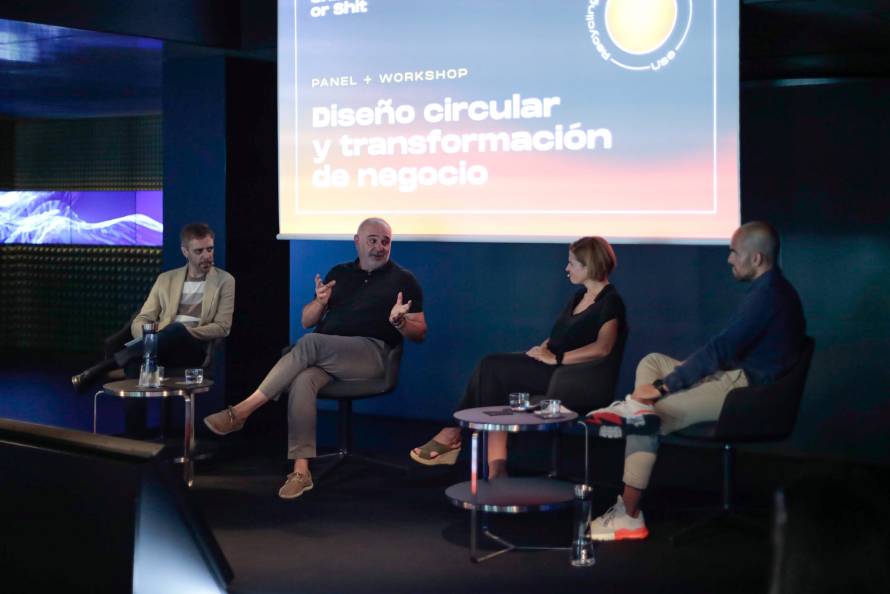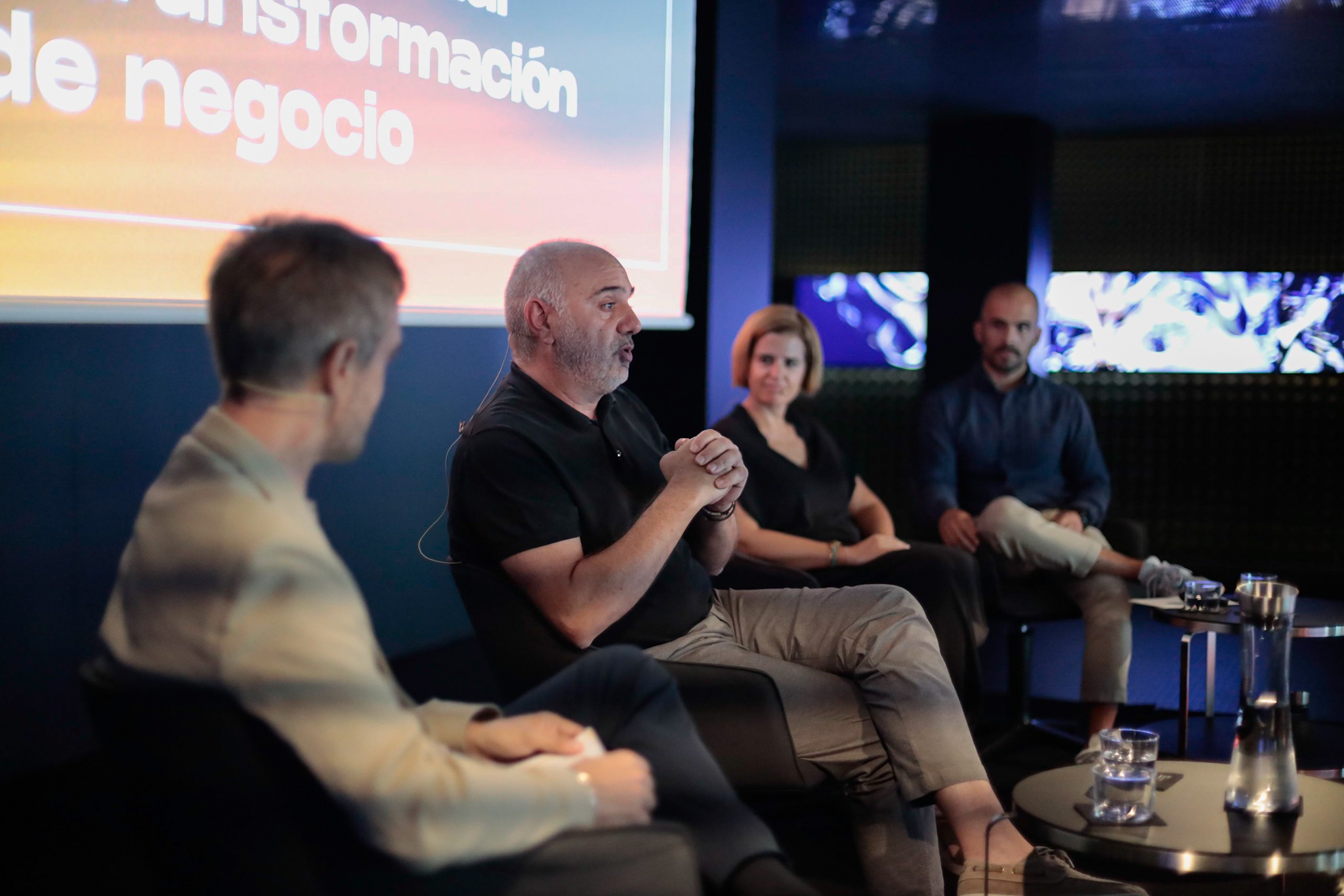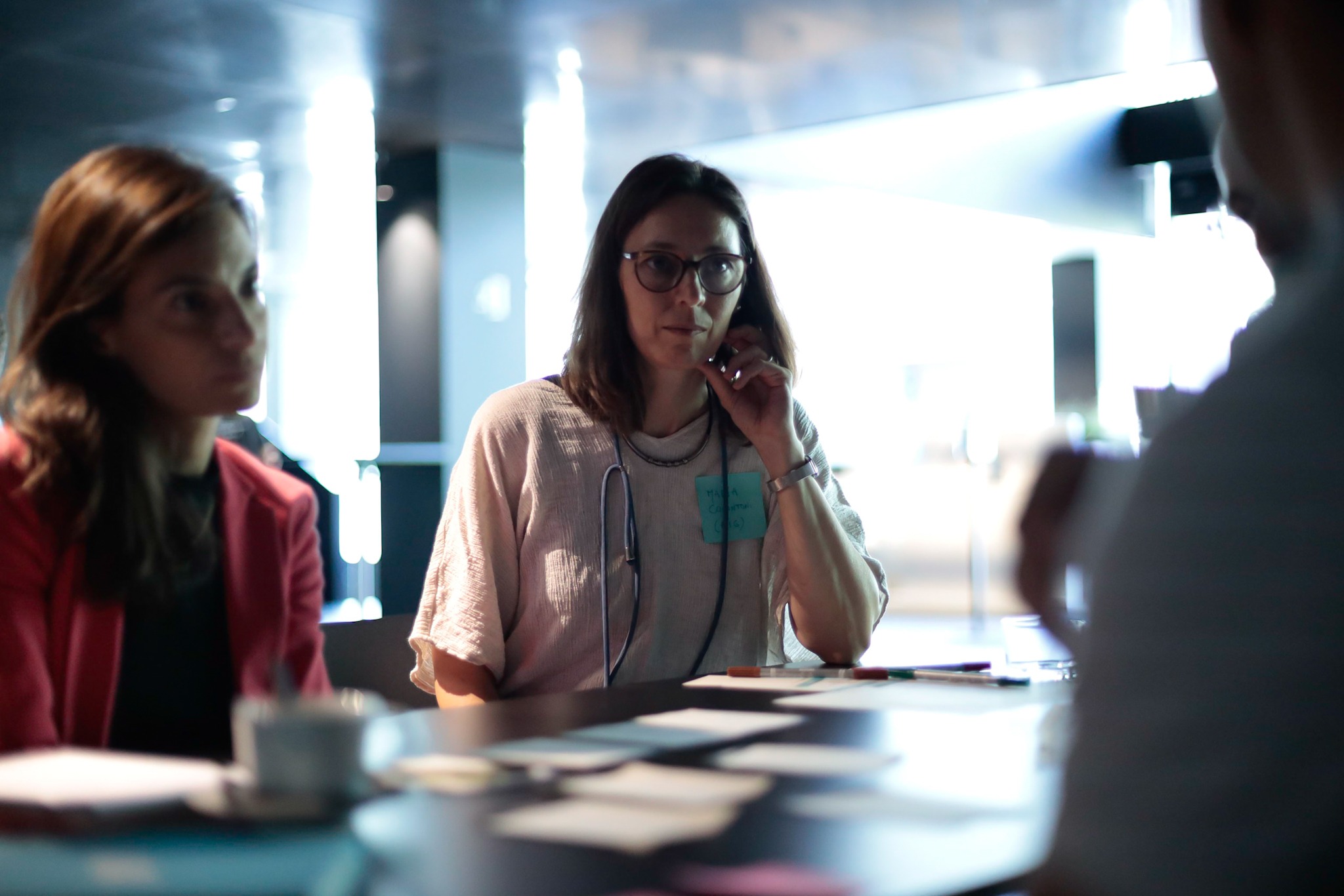
29 July 2022
Shift or shift: Circular Design and New Business Models, a reminder of the need to create synergies
David Tapias, Fluidra's Innovation Director, shared with the attendees the challenges and lessons learned from his circular economy and design project developed together with EIG and Lúcid. The attendees put the collaboration into practice in a practical Circular Ventures workshop.
On 14 July, some 20 companies met to delve into the design of products and business models for a circular economy and synergies within the sector, within the framework of the Barcelona Design Week, as part of the Shift or Shift cycle.
The session, organised by Lúcid, EIG and D!OS, aimed to share knowledge with manufacturing companies and provide guidance on the mindset needed to face a change of concept in the way they design and market their products.
A key element in this was the testimony of David Tapias, R&I Manager at Fluidra, who explained the in-depth work they are carrying out, in collaboration with EIG in terms of strategy and with Lúcid in product design. The conversation, presented by Juan Mellen, president of D!OS, began with an explanation of the conceptual framework and design approach by Cristina Sendra, Technical Director of EIG, and Marc Fabra, Co-Founder and Design Director at Lúcid.
“At EIG we do not work to achieve products that have less impact, but that regenerate ecosystems, the economy and improve people’s lives,” explained Cristina. Cristina pointed out the importance of adjusting expectations to achievable goals, without losing sight of the vision, in a process that must integrate different aspects that affect all areas of the company. Cristina also pointed out the importance of ensuring that the materials used are safe and healthy at all stages of their life cycle as the key to any circular design. From there, step by step progress towards the global vision of the system in which it will be inserted, to ensure that it provides services in an adequate manner, both in the function foreseen for its use and at the end of its useful life.

“80% of the impacts of the product are defined in the design phase, this has to make us rethink the way we design,” said Marc. Marc pointed out that designing for the circular economy at the product level requires a fundamental change: to move from thinking about the product, its function and its aesthetics to thinking about the business model. In other words, designing products that can respond and function in the new economic context. In this way, by insisting on the systemic perspective, the problems that we face today with products designed for the linear economy are avoided from the design point of view.
David explained the context in which Fluidra decided to deepen this process of innovation, within the framework of its ESG strategy. He pointed out that the direct and permanent involvement of the Group’s general management was essential, actively leading the change, as well as the involvement of multiple internal teams, supported by external experts. “To innovate in the product and move towards circularity, you have to believe in it and create the culture, to commit to it from the management, with structure and resources”. As lessons learned, he highlighted that by applying the Cradle to Cradle® approach to product analysis, they discovered that very little is actually known about both the material composition and the supply chain behind it. This also makes it difficult to reduce upstream impacts and to manage traceability and transparency of information.
David Tapias also explained that Fluidra has had to define and standardise its own circularity criteria. They decided to opt for indicators linked to tangible concepts both for their own team and for their stakeholders. One example is the durability parameter, which they defined as an indicator. How long the products have to last, what percentage of recycled material they should contain, the percentage of recyclability, these and other indicators, such as repairability or recovery systems, have been and are being defined in collaboration with the EIG team.

“Each company has to define with real values what it means to be circular. It worked very well for us to identify how much more repairable, recyclable or durable our products should be,” said David. The attendees had the opportunity to talk with David Tapias, who generously shared his experience in detail.
The large number of questions and the interest raised meant that the initial part of the workshop took half an hour longer than planned. We then moved on to the working session, in which all the companies had the opportunity to challenge themselves to think in a disruptive way in order to devise circular joint ventures. The dynamic began by identifying the strengths and opportunities of each company to pool them together and, from there, to understand how they fit into a broader and more diverse system. After about 40 minutes of work, 5 “joint ventures” emerged, which we will not share here, because surely some of them will materialise into a business for the future.
We hope you will be able to join us in future sessions.